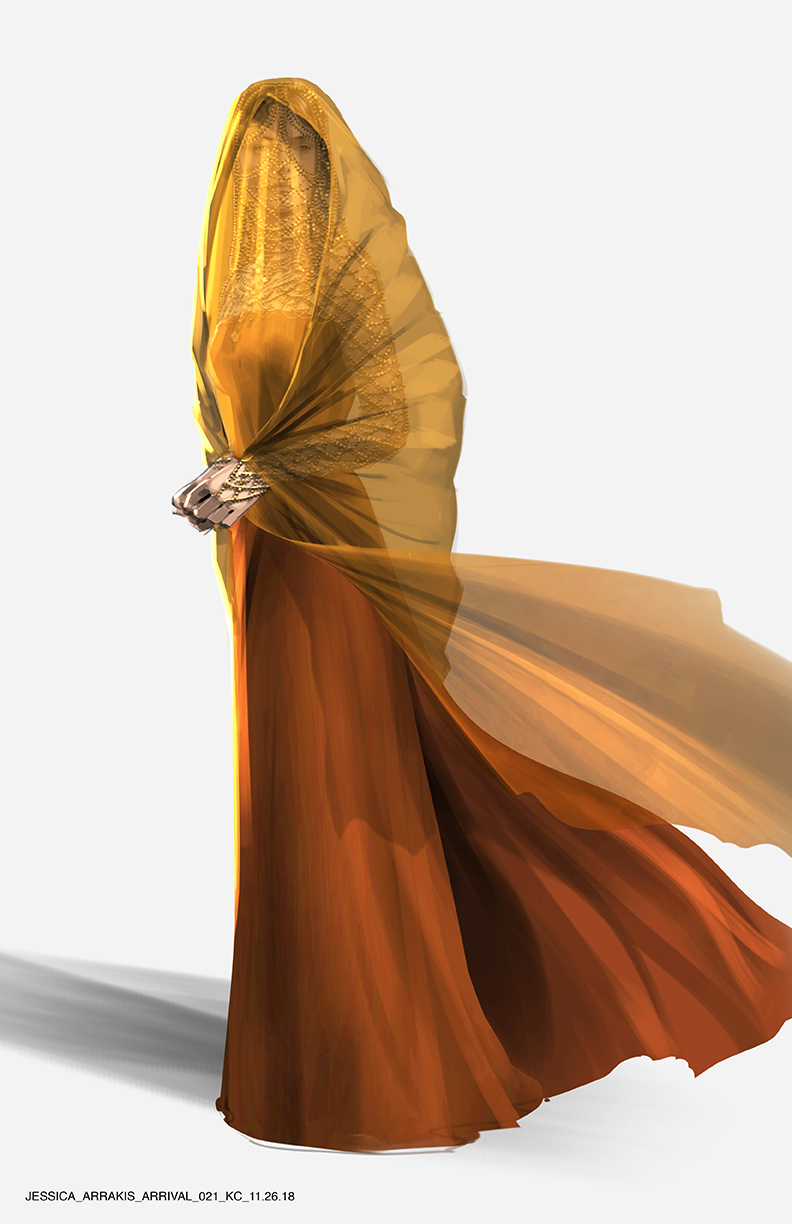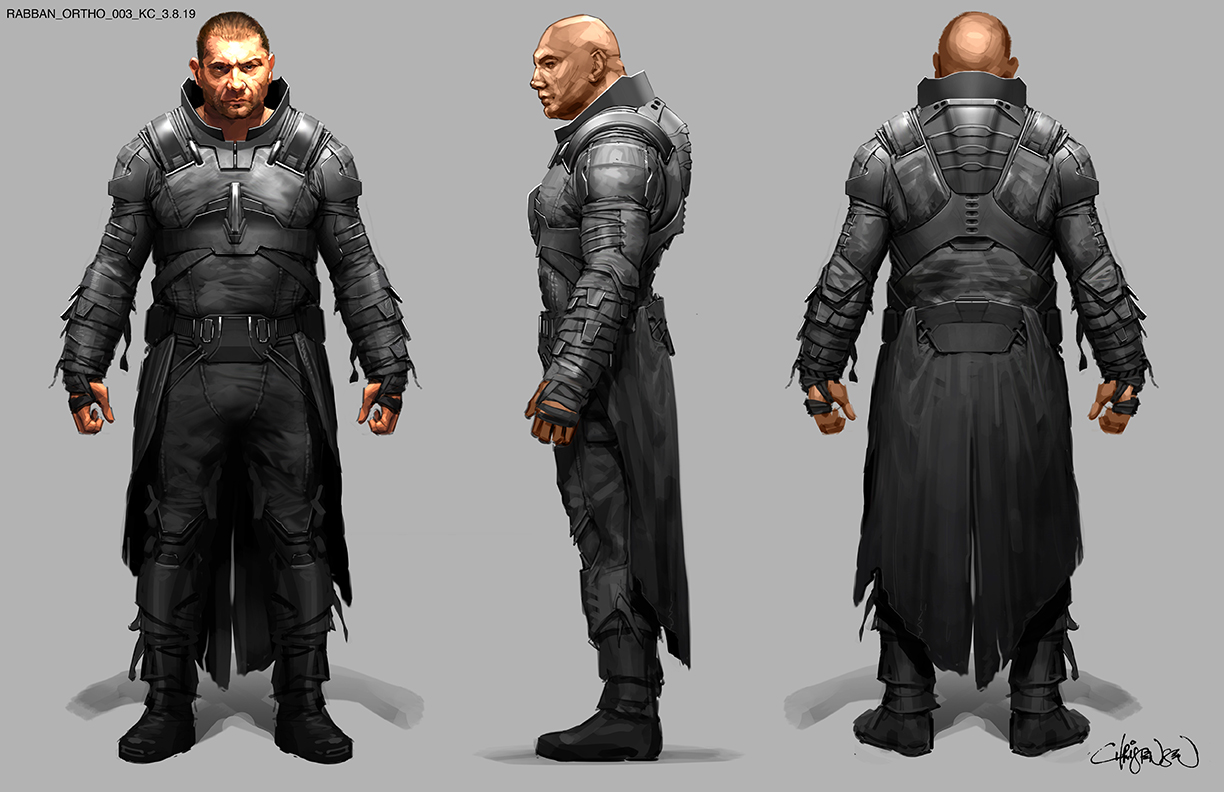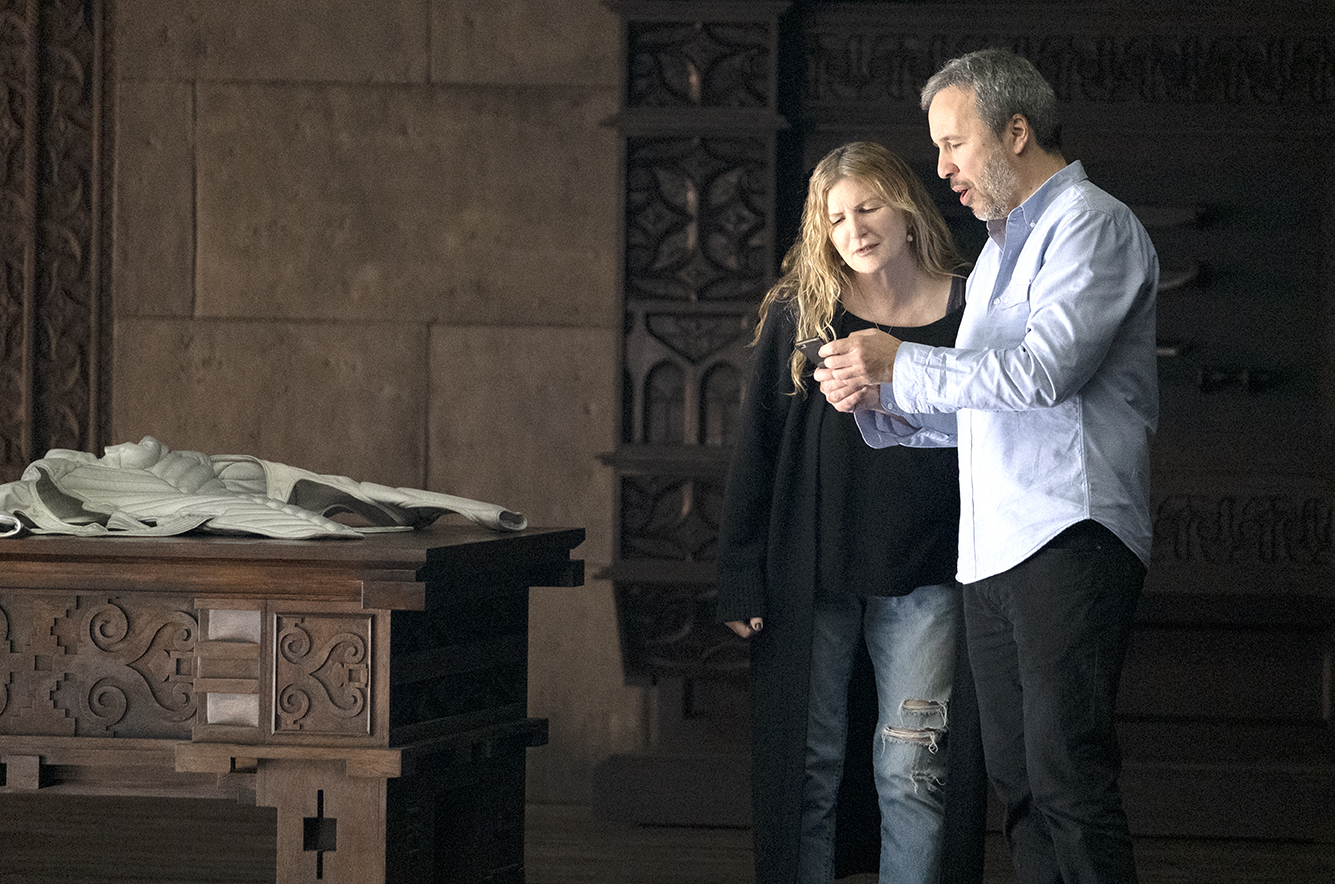Hand-made Dune costume may be the most expensive ever made

Dune costume designer Jacqueline West reflects on her work on the blockbuster movie, and in particular the medieval-inspired gown worn by Lady Jessica as she arrives on Arrakis. “We call it the most expensive costume ever made,” says the designer.
Every link in the chain mail was made by hand and fitted, it took months. “For a while, as [costume maker] Bryony Tyrrell worked on it, I’d go and see the progress and almost every day there was no progress. But finally it all came together. It was kind of a mediaeval masterpiece. But beautiful.”


There's little surprise that Dune has become an epic of all proportions, and that something as subtle as costume design has also upped the ante on Hollywood's standards. Dune, after all, is considered one of the great unfilmable books, along with Issac Asimov's Foundation, which has also become a hit for Apple TV +, you can read how that show was made too.
For Dune, West continues, “It really shows her mediaeval queen glory on Arrakis,” before describing the costume’s influences: “[These designs] are based on Balenciaga and how he took everything from [Diego] Velazquez and Goya but also mediaeval paintings. There's a simplicity that's almost spiritualistic to them.”
Save 40% on an ImagineFX subscription
ImagineFX is the leading title for digital artists. Its 13 issues per year offer exclusive inspiration, advice and interviews with some of the world's leading artists, and as a subscriber, you'll get every issue direct to your door or device!
Offer ends 26th December 2021 (GMT)
West talks at ease about the influences on the film’s costume designs. With a masters degree in art history focusing on medieval art, it’s clear West was in her element creating the costumes for Dune. But films weren’t her first love. West began her design career casually at clothes swap parties at Janis Joplin's house. When she did eventually open a store her film career only began by way of Phillip Kaufman and Sean Connery. She laughs, saying: “Phil Kaufman said, ‘the way you set out your store you should be in movies,’ so he hired me for Henry In June, and got Sean Connery to call and get me in the union”.
Save 50% on an ImagineFX subscription
ImagineFX is the leading title for digital artists. Its 13 issues per year offer exclusive inspiration, advice and interviews with some of the world's leading artists, and as a subscriber, you'll get access to every single issue, direct to your door or device!
Offer ends 30th November 9.59 am (GMT)
Creating Dune's Stillsuit
The famous Stillsuit design needed to be tailored to each actor, and every suit features bespoke details and talismans hand-picked by the cast to lend their character’s a backstory. Moulds were made for each actor and each suit took two weeks to build.
The suits were created by concept artist Keith Christensen, who had previously worked on Black Panther. “He was obsessed with the book,” says West. “The first first drawing that he did of the Stillsuit was perfect. I mean, nailed it.”
Daily design news, reviews, how-tos and more, as picked by the editors.
Another Marvel regular Jose Fernandez at Iron Head was brought on to create a prototype of the Stillsuit. “I love that guy,” says West.
It all came together at a workshop in Budapest. “Everything followed the function of that suit,” explains Jacqueline, who tells us it's the reason why we see crossways running tubes and the external codpiece.
West explains: “Herbert describes the undersuit as being a micro sandwich of layers of microfibers and cotton that pull the oxygen out of the air for the breathing nose. And it was all designed that these actors have so much action they all had to be able to move. And so everyone was bespoke.”
The Tarot influence
“For the Bene Gesserit I use the tarot cards because there's a real mysticism in Frank Herbert and I used it for Charlotte Rampling,” explains West. “I used the High Priestess in the tarot cards, and then I combined a lot of tarot cards. The Queen of Wands, the Queen of Cups.”
West reveals she really loved using the Tarot of Marseilles as an inspiration, “which has a real medieval feel, I call this movie ‘mod-eval’, because I really went to medieval art and influences to create a world starting over in the future.”
1000 suit designs

West reveals the design team created 200 core soldier outfits and over 1000 costumes for Dune. She shares some subtle design references you may miss if you don’t watch closely enough: “[The Harkonnen] were all based on arachnids and insects and giant ants; the helmet is like a giant ant head, and the textures of insects,” says Jacqueline West.
West’s co-costume designer on Dune, Bob Morgan, tells us a little more about the scale of bringing Dune to the big screen. Working with concept artist Keith Christensen, costume designer Bob Morgan explains how the outfits for Dune underwent many changes, from concept to prototype, “And we would kind of hone in on what that feeling was and what that idea was” he says, adding insightfully: “A costume is not an illustration, you can't wear an illustration.”
This is the difference between designing a costume to be worn and a VFX shot. It’s what makes Morgan’s role so interesting. The concepts he’s working exist, they’re tangible and relatable.
Morgan continues: “So when you put it on and turn somebody around, or they move in it, and you say, ‘Oh, this could be better or that's perfect, you know, and you do find your way kind of by distilling all the time, down to that thing, both in colour and style, and texture.”
An artist himself, Morgan compares costume creation to distilling form and detail in a painting. And just like painting a costume designer tussles with the idea of knowing when something is done. “Well it kind of lines up, you know, in my head with the image that I've seen.”
Morgan tells us good costume design is about discovering the character. In Dune this means finding the balance between the competing worlds; House Atreides, House Harkonnen and the Fremen of Aarakis dominate the story.
“Our challenge and our goal was to make each one unique, to reflect what the world was, and visually be able to see in a moment who each were […] and we did that both in colour and feel,” reflects Morgan. “It is wonderful when they are so distinctly different. When you have diametrically opposed cultures and worlds, it does make it easier in some ways, and it does make it more challenging at the same time because you want to do something that's fresh and yet believable and visually appealing.”
A romantic vision
Co-costume designer West worked on the Atreides look. “I made them a dark bottle green because it's a green planet. They still have water resources, it's quite lush,” she tells us. “And so then losing it and losing their dynasty I used the Romanovs as an example for the shapes of the costumes.
Dune is a post-computer universe, and that ensures the designs have a functional feel. Looking to history and modern culture the costume concept artists create outfits built around function and form. Morgan reveals how the team looked at how people use wraps in the desert as wearable tools; the wraps keep the body cool and head wraps can be unwound to yards of material, used as makeshift ropes, hammocks, and backpacks, for example.
West used the romantic vision of Lawrence of Arabia as inspiration for when the House Atreides arrive on Arrakis, but also looked to Tuareg people of the Sahara, particularly for the shape-language and motion of their clothing.
“I've always loved how the Tuaregs changed shape when they're on their camels or are walking in the desert. And how instead of having goggles or something protecting their eyes, the wrap gauze across their faces, and with all the wrappings were just their eyes showing. I thought it's so romantic,” says West. She even had vials of sand shipped from Jordan to colour match with her designs, and create Tuareg-blue wraps to cover the Stillsuits.
Dune’s iconic Stillsuit, while fictional, also lends itself to science fact in Morgan’s mind. The designer worked on the TV series From The Earth To The Moon where he studied how space suits work. The Stillsuit, says Morgan, has similar principles. “It’s something that recycles […] In this era, this very timely era where drinkable water is disappearing.”
Never miss an issue of ImagineFX

If you liked this piece, you'll love ImagineFX. The world's favourite digital art magazine is on sale in the UK, Europe, United States, Canada, Australia and more. Limited numbers of ImagineFX print editions are available for delivery to over 120 countries from our online store (the shipping costs are included in all prices).
Read more:
- Discover the 27 top character designs
- Start you film career with the best video editing apps
- Get creative with the 25 best Photoshop plugins

Ian Dean is Editor, Digital Arts & 3D at Creative Bloq, and the former editor of many leading magazines. These titles included ImagineFX, 3D World and video game titles Play and Official PlayStation Magazine. Ian launched Xbox magazine X360 and edited PlayStation World. For Creative Bloq, Ian combines his experiences to bring the latest news on digital art, VFX and video games and tech, and in his spare time he doodles in Procreate, ArtRage, and Rebelle while finding time to play Xbox and PS5.







